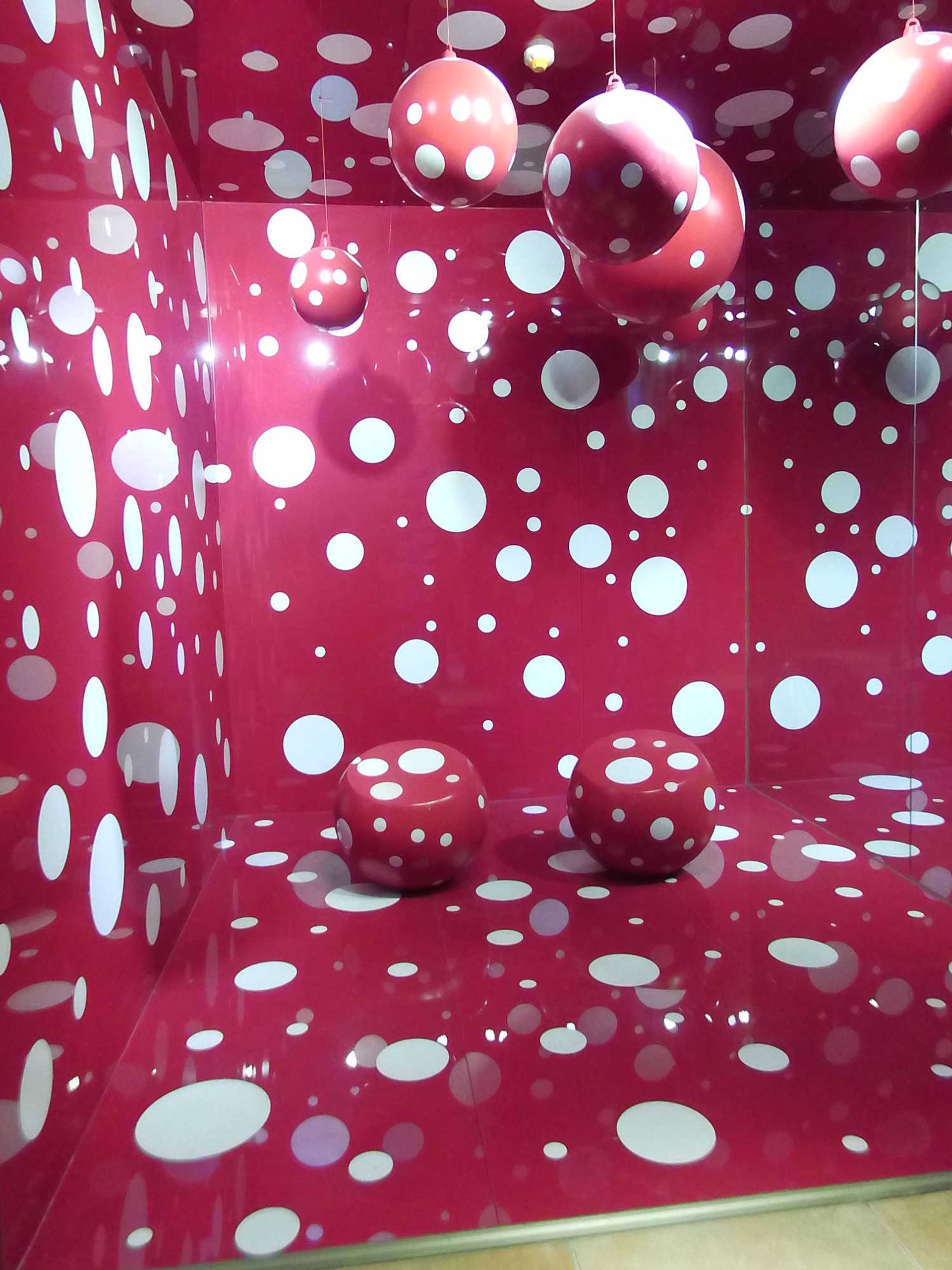Along with Virtual Reality and 3D games, an ice world, a ball pit and a climbing wall, Shanghai’s vast new entertainment complex, Family Happy Dream Park, will also feature areas modelled after Random International’s Rain Room and Yayoi Kusama’s red-and-white Dots Obsession when it opens later this month. “The materials are different, we focus on immersive experience instead of an exhibition,” says the centre’s brand manager Emy Zou. She says the organisers did not worry about copyright, “because they’re different…we built it in accordance with Chinese standards,” rather than global intellectual property parameters.

“It may look similar, but there are many differences,” adds the marketing and operations director Rong Wei. “Previously, there was a Rain Room in Shanghai, while ours is called Dream Rain Zone, and we registered a trademark for it. And we have an advanced technique, with inductive technology.” The Dream Rain Zone in Family Happy Dream Park, or Jiajiale in Chinese, is situated in a round area within the atrium of the subterranean centre. Though adding a neon heart and moon to the sides, and significantly smaller than the original Rain Room, the appearance is more similar to Random International’s creation than most of the dozen or more imitation Rain Rooms that have been introduced in China since the 2015 exhibition at Yuz Museum. Zou says that the rain zone offers a sensor option like the original as well as a maze setting that has featured in prior imitations.
Rong says that Jiajiale has taken safety precautions appropriate for a family-oriented project. “We have three rounds of filtration; the falling water is actually purified water. Because there will be dust on the floor, first we filter the dust, and the water comes into a filtering system.” The filters will be replaced about every two weeks, depending on the visitor traffic. “The filter cartridge will also be changed according to the standard, because some kids may try to drink the water, so we’ve planned a completed water purifying system from the beginning. The whole investment for the park is around 100 million yuan, we try to make the park a visitor friendly one.”
Jiajiale is part of the new Fisherman’s Wharf business complex in Shanghai’s northeastern Yangpu waterfront. The area, home to historic docks and industrial sites as well as the city’s old Jewish refugee quarter, is undergoing a massive redevelopment similar to the southwestern West Bund, but without that area’s cultural focus. However, the area, which in the early 2000s housed seminal avant-garde gallery DDM Warehouse, now boasts the Shanghai Fashion Centre. Fisherman’s Wharf, owned by Shanghai Hongjiu Industry Group, is built on the site of an old seafood market next to the Shanghai Waterworks Science and Technology Museum, in a castle-like 1930s water treatment facility. The wharf also contains an office building and Italian furniture store, Zou says. To Kusama and Random International, she says, “We welcome them to visit and communicate or cooperate with us, we are willing to have more cooperation [with artists].”


